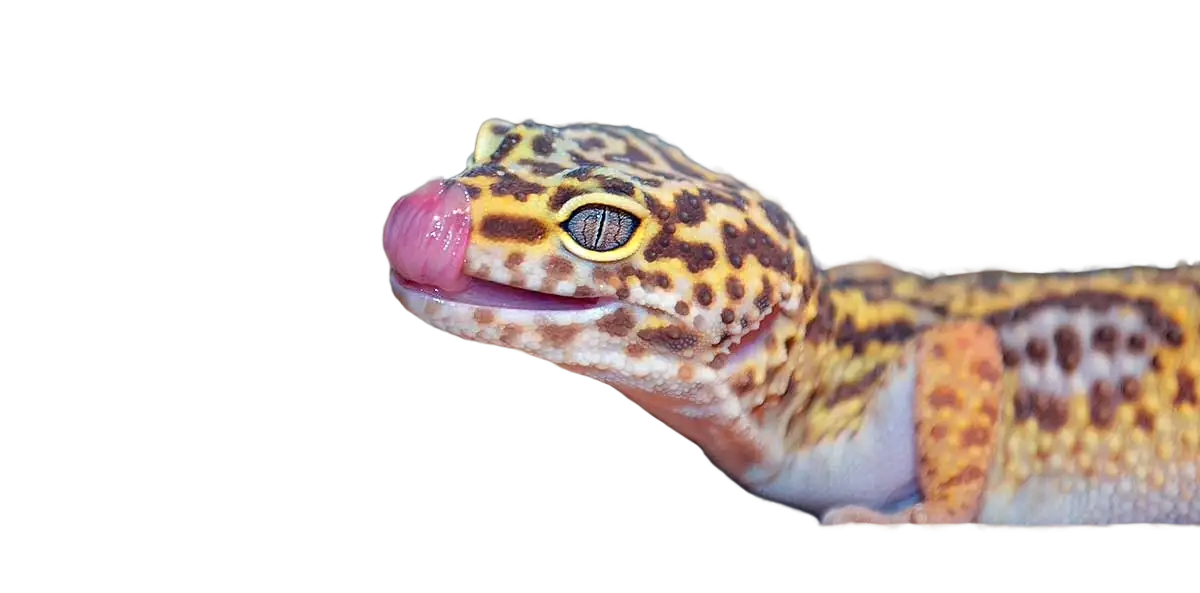Species overview
Leopard geckos (Eublepharis macularius) occur across Afghanistan, Pakistan, India, Nepal, and Iran, inhabiting rocky scrub and semi‑desert. Hatchlings are 3–4″; adults typically reach 7–11″ by 12–18 months. They can drop and regrow their fat‑storing tails as a defense. With responsible husbandry, lifespans of 15–20 years are common (PetMD).
Habitat and size
Provide at least a 36″ × 16″ × 18″ enclosure with a warm side, cool side, and three hides (warm, cool, humid). Use secure ventilation and solid climbing decor like slate and cork.
Substrate choices range from paper towels to a semiarid mix (e.g., 50% organic soil, 50% play sand). Avoid loose sediment that poses impaction risks, and monitor substrate ingestion (RSPCA).
Heating
Create a warm zone of 82–86°F (28–30°C) and a cool zone of 75–79°F (24–26°C). Use a guarded basking or ceramic heat source controlled by a thermostat, and verify temperatures with a digital probe (RSPCA).
Low‑level UVB lighting is increasingly recommended and can support calcium metabolism; use a low‑output tube on a 10–12 hour schedule.
Humidity and airflow
Keep ambient humidity around 30–40% with strong ventilation to reduce respiratory risk. A mesh lid or side vents help keep air moving (ReptiFiles). Avoid sustained levels above 50%.
Provide a humid hide (~70–80% humidity) by placing damp sphagnum moss or paper towels inside a hide on the cool side. This microclimate assists shedding without raising the entire tank's humidity (ReptiFiles).
Food
Offer a variety of gut‑loaded insects such as crickets, mealworms, and dubia roaches, with waxworms as an occasional treat (RSPCA).
Juveniles (0–12 months) eat daily; adults every 2–3 days. Dust feeders with calcium powder (with D₃ for non-UVB setups) at every feeding for young and half the time for adults. A calcium dish in the enclosure allows self-supplementation (RSPCA Rescue).
Always provide a shallow dish of fresh water, cleaned daily. Water dishes also create slight humidity, which can be beneficial near hides (The Spruce Pets).
Enrichment
Include multiple hides (warm, cool, humid), low climbing structures, and a digging area to encourage exploration and exercise (behavioral enrichment research).
Decorate with rocks, cork bark, and artificial plants to create cover and visual barriers, reducing stress and mimicking the gecko's natural habitat. Periodically rearrange decor for novelty, and allow supervised free-range time in a safe space can also be enriching (ReptiFiles).
